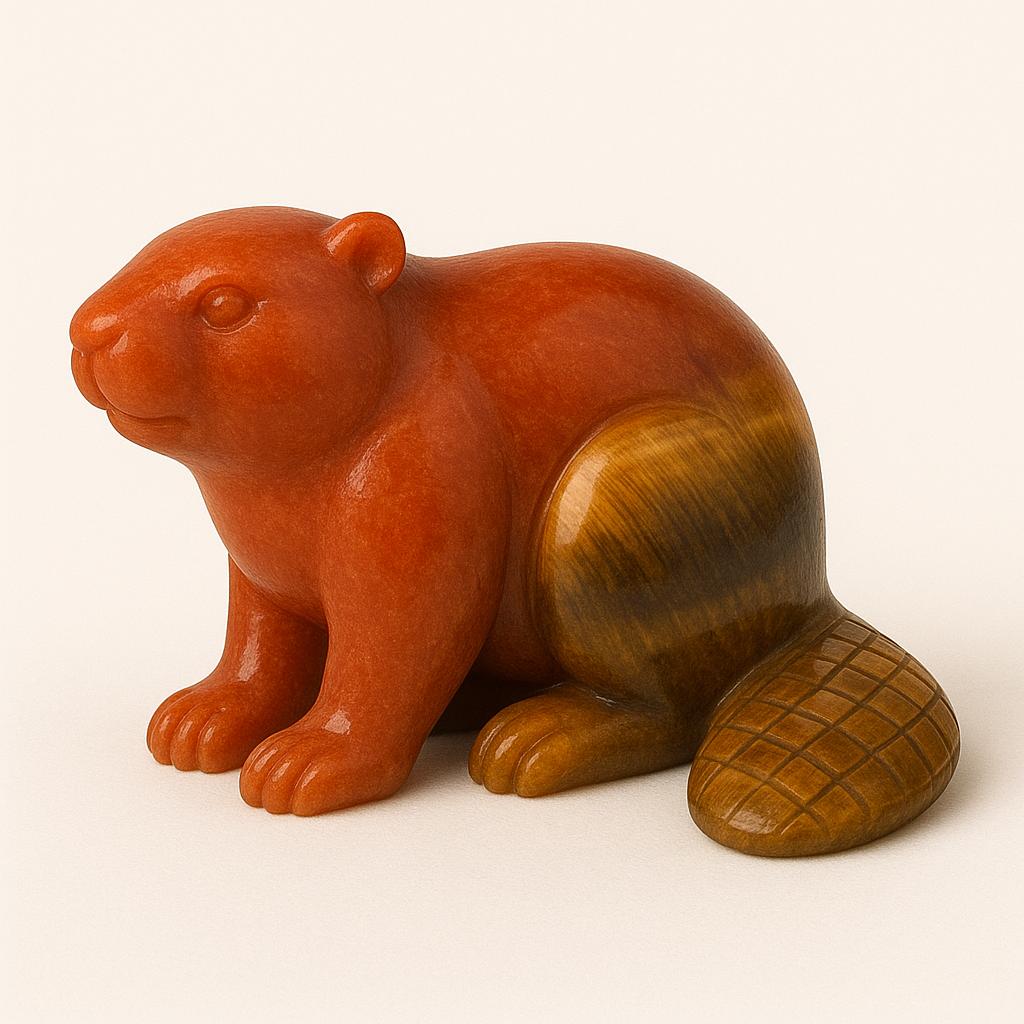
The Symbolism of Beavers
Share
Patient builders and masters of earthly transformation, beavers move through water and wood not with chaos, but with quiet industry. Their presence reshapes landscapes—not by force, but through persistent creation, community effort, and alignment with natural flow. The beaver is an emblem of stability through action, service through structure, and the soul's desire to co-create safe spaces for growth and continuity.
To contemplate the beaver is to encounter the archetype of the sacred architect, of labor offered in harmony with nature, and of the being whose work becomes a dwelling for peace.
The Sacred Engineer in Cultural Memory
In Indigenous North American traditions, the beaver is honored as a symbol of diligence, cooperation, and transformation of the environment for the benefit of the whole. It is considered a bringer of abundance—not through consumption, but through sustainable, intentional change. In some teachings, it is viewed as a medicine animal who knows when to work and when to rest, and who carries the wisdom of building for future generations.
Among certain earth-centered philosophies, the beaver is recognized as a guardian of water, a being who builds not only for survival, but to shape balance between movement and stillness, current and containment. Its damming is not seen as obstruction, but as the creation of sanctuary—a place where life may settle, root, and renew.
Wood, Water, and the Geometry of Service
The beaver is both land-dweller and swimmer, moving easily between elemental domains. This reveals a consciousness that is adaptive yet focused, capable of navigating emotional waters while remaining grounded in physical reality.
It fells trees not recklessly, but with purpose. It rearranges terrain not to dominate, but to construct what sustains. This is not frantic work—it is deliberate creation, action offered in service to kin and future stability. The beaver teaches that to build with love is to worship through matter.
Its teeth, constantly growing, are kept in balance through its work. This reflects the metaphysical truth that certain energies within the self are refined only through right use—that potential becomes virtue through application.
The lodge and the dam, both beaver-made, represent shelter and structure—spaces where rest, bonding, and safety are possible. In this, the beaver becomes the initiator of sacred environment, of physical forms that invite spiritual peace.
Resonance with the Energy Centers
The beaver resonates primarily with the yellow-ray energy center—the solar plexus chakra, which governs social organization, intelligent will, structured effort, and the coordination of the self within the field of many.
Its ability to organize labor, construct communal habitats, and sustain collective life through physical work speaks to a refined yellow-ray field—willed action that does not isolate, but integrates. The beaver teaches that power is expressed not only through leadership, but through contribution, and that to build is a form of love enacted.
There is also a secondary resonance with the red-ray energy center—the root chakra, which governs physical survival, groundedness, and the embodiment of security through action.
Its attachment to Earth, its sensitivity to material conditions, and its unwavering commitment to protecting its home all reflect a stable and healthy red-ray. This energy is not reactive—it is foundational, ensuring that emotional and social energies may grow from a place of physical trust.
Together, yellow and red pulse through the beaver as:
service anchored in structure,
will embodied in work,
and safety created through sacred labor.
The One Who Builds Where Peace May Dwell
To walk with the beaver is to learn that creation is healing, that community begins with space, and that labor becomes love when it is offered without ego. The beaver teaches the seeker to work not for recognition, but for restoration, to honor the quiet strength of contribution, and to understand that the act of building is itself a form of prayer.
The beaver does not rush.
It shapes.
It does not dominate.
It arranges what is into what may be.
It teaches:
Build what shelters.
Work with the Earth.
And let the hands become holy through what they create.